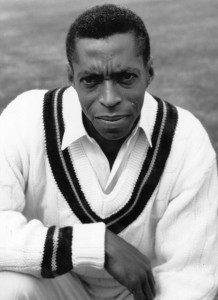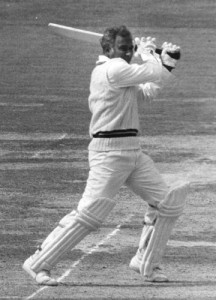If the West Indies cricket tour of Australia in 1960/61 was dramatic and entertaining, it wasn’t just the quality of play that was superb; it was the sportsmanship that was rigorously testing, yet mutually admiring. No wonder the tour produced the (then) unique result of a tied Test in the first match at Brisbane, and also contrived to evoke a spontaneous outpouring of people on the streets at Melbourne to bid goodbye to the tourists as they were about to depart from Australia at the end of the tour.

In Tony Cozier’s piece, ‘Reflecting on a rich past’ he wrote: “on the eve of their departure, someone had the idea to stage a motorcade for the popular losers through the streets of Melbourne. Nearly 100,000 turned out-and this was at a time when Australia still observed a whites-only immigration policy. It was a highly significant chapter in West Indian history, the first time they were led on tour by a black captain, Frank Worrell. It was a post previously the preserve of the three per cent white elite and Worrell was only appointed after a strident campaign that paralleled the struggle for independence. There were those waiting for him to fail to say ‘we told you so’. That the opposite was the case was an enormous fillip to the people’s self-esteem.
The second and third Test matches were almost as absorbing as the first. So was the fourth, although it is nowadays almost forgotten, except for the crucial incident in the final session of play on the final day. So much so, but how many of you remember the outstanding performances by two of our own heroes; Rohan Kanhai and Lance Gibbs? Matter of fact, by virtue of their outstanding performances they were considered then as the best in the world. Rohan Kanhai became the first West Indian to score a separate hundred in each innings of a Test in Australia. As for Gibbs who achieved the rare feat of a hat-trick in Test cricket. It is the only hat-trick in an Adelaide Test.
There was a big question mark against Gibbs’ name when he arrived in Australia. True, he had done reasonably well at home in his first series against Pakistan. But since then he had a lean time in India and Pakistan, and had not played at all in the series against England. Generally, he was regarded as a sort of second-string bowler, as one would do a lot of work in the state matches and so allowed the famous Sonny Ramadhin to be at his best in the Tests. Thus, more than a few eyebrows were raised when Frank Worrell told the press before a ball was bowled in the series: “Gibbs can well prove the sensation of our tour.” “Worrell, of course, proved to be correct but it didn’t look so for the first four matches when Gibbs, like the other West Indian bowlers was hit all over the place. Nor did it look like anything more than a wishful thinking when Gibbs pulled a muscle before the first Test and, consequently could not be considered for that or the second. But then came the third Test. Ramadhin was dropped-a sensation in itself! Gibbs was placed in his place. And the Guyanese icon, Gibbs bowling in tandem with Alf Valentine, almost collected a hat-trick, as he took three wickets in four balls and propelled the visitor to a comprehensive win. He followed up this feat with a most astonishing one-a hat-trick in Test in Australia since 1903-04 and the second West Indian to do so.
According to Gibbs: “I can remember that quite clearly. It sticks out as one of my better performances. I had two for about 60 at the time and I first dismissed Ken Mackay lbw and then Wally Grout was caught by Sobers at short-leg and a fellow by the name of Frank Mission was coming out to bat, so we had the fielders crowd round him, as we put the pressure on, but he was expecting me to get up in the air with an off-spinner, and I bowled a real quick delivery and before he could have brought the bat down, he was bowled, in any language, that was sensational! Gibbs followed this with four for 74 runs in Australia’s first innings in the final match at Melbourne, after playing in three Test matches, he found himself heading the bowling averages with 19 wickets at 20.28 each.


